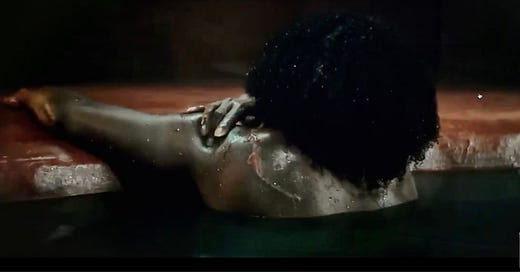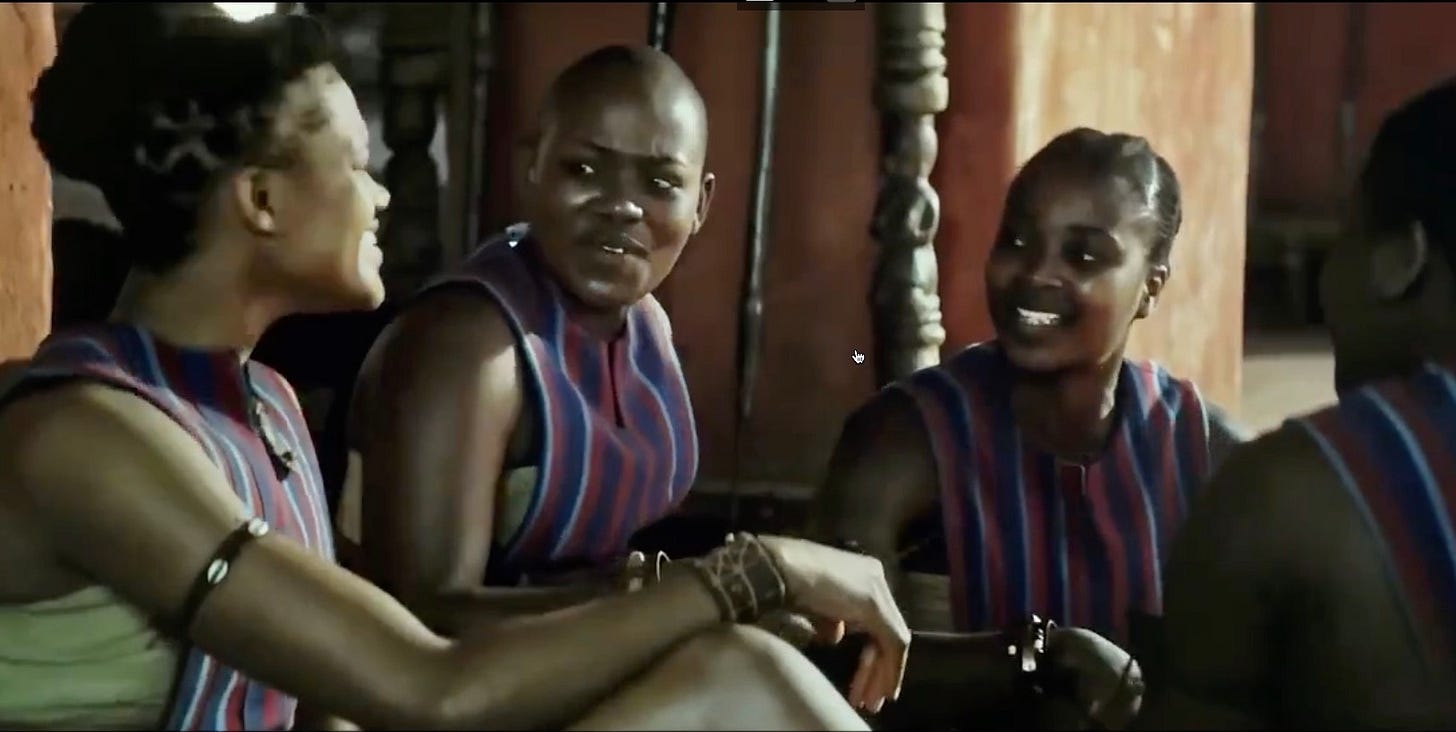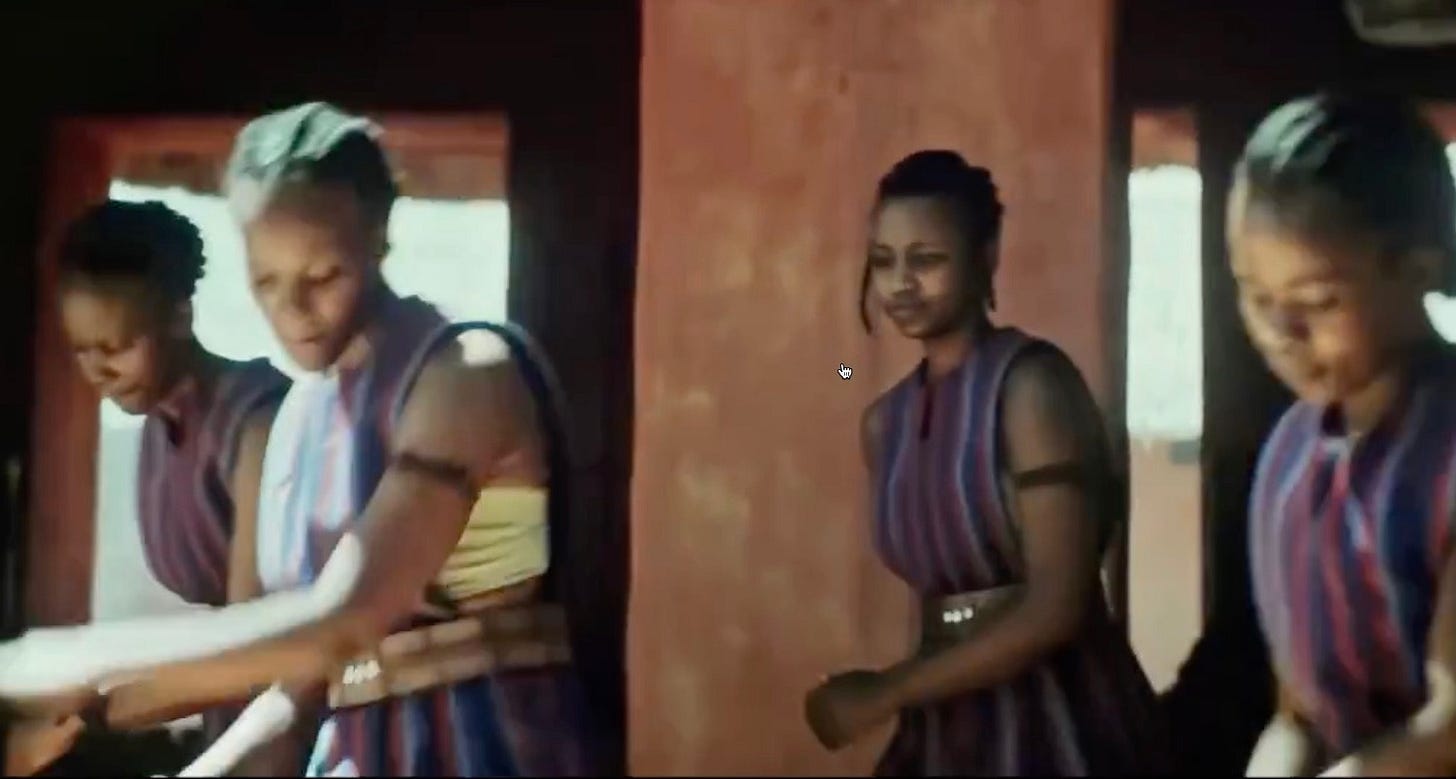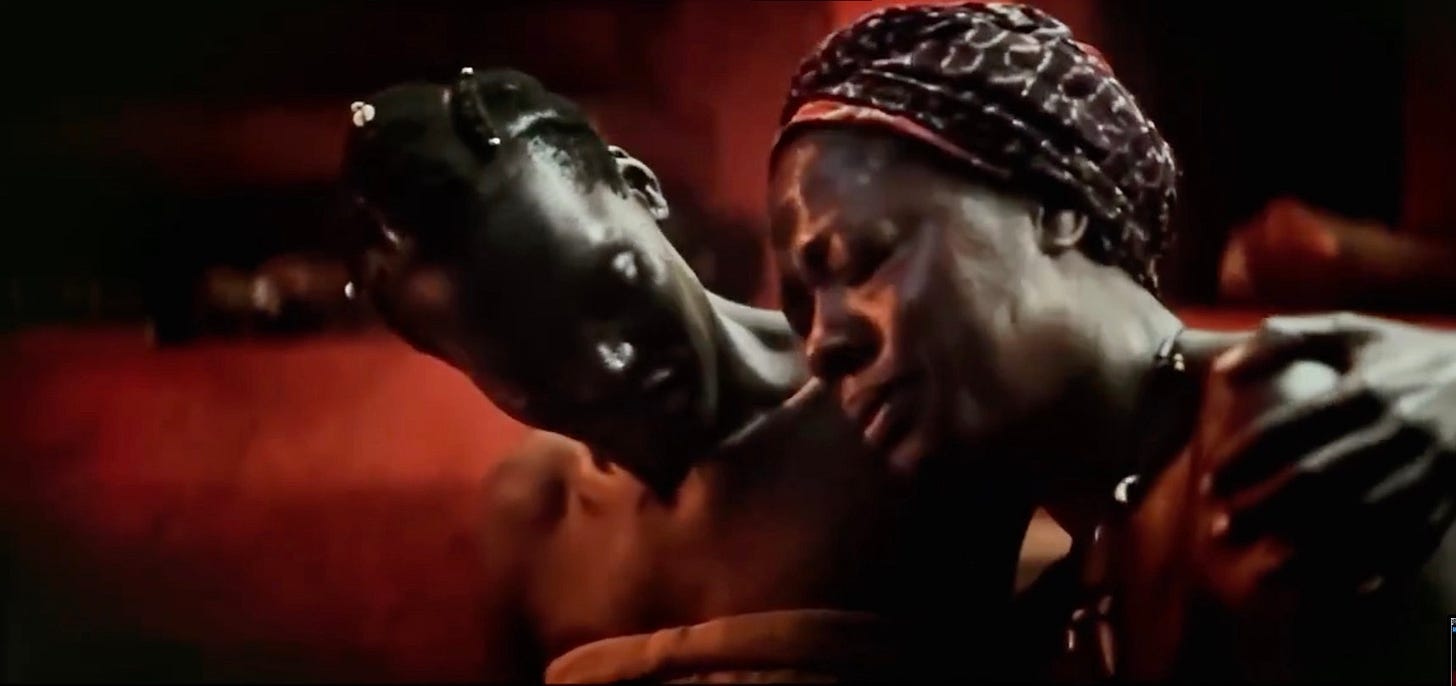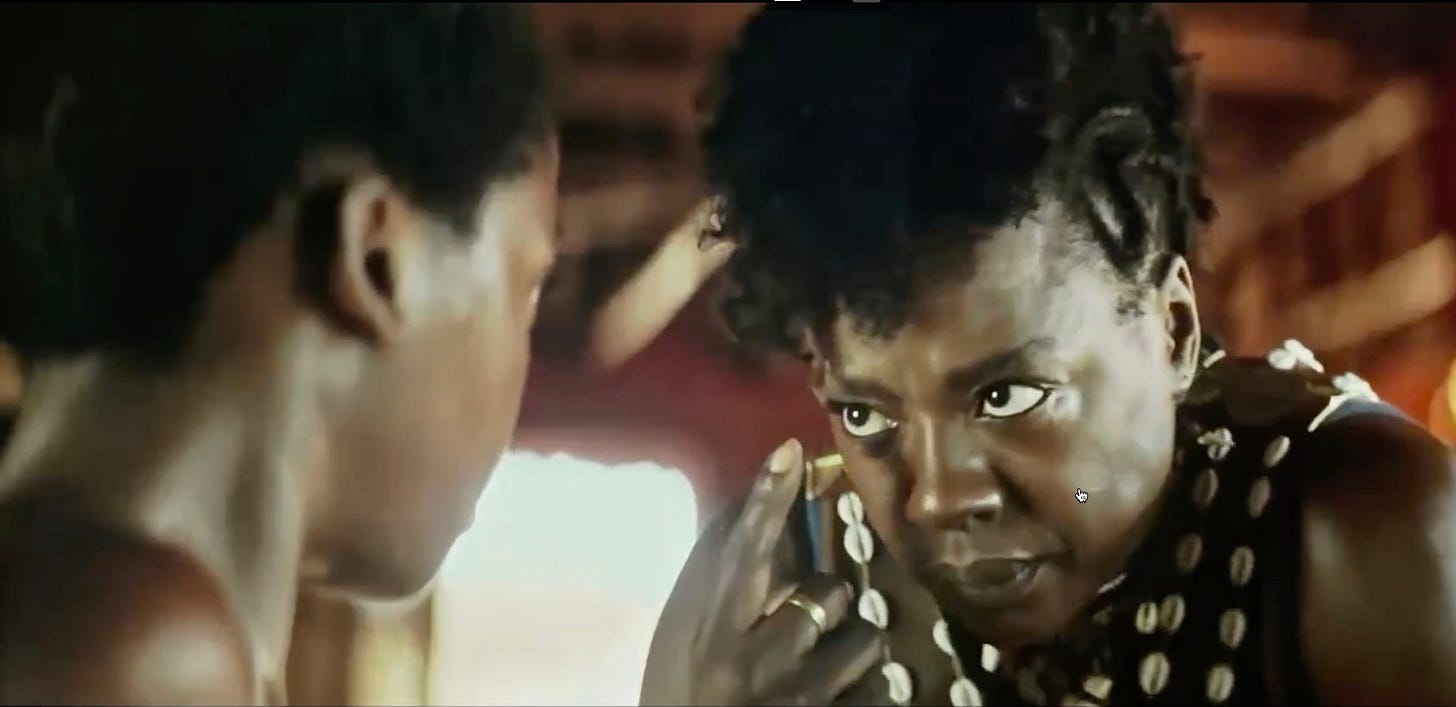The Woman King
Following the voiceover prologue, two questions and a promise open The Woman King:
Where are the prisoners?
Where are our people?
You will be home soon.
Claiming happens. A reclaiming. A transformation. A return. Redress. From “prisoners” to “our people.” A claiming. To be claimed: “our people.” Something has been interrupted. It is likely the prisoners would have been sold into the brutalities of enslavement. In that process, they would have been estranged from familiar forms of belonging, compelled to forge new bonds, and some would not have survived, and even those who did, would have been transformed by the journey across the waters, the dispersal of the familiar.
I am rewatching The Woman King after reading Saidiya Hartman’s new preface to Scenes of Subjection. She writes,
Scenes endeavored to illuminate the countless ways in which the enslaved challenged, refused, defied, and resisted the condition of enslavement and its ordering and negation of life, its extraction and destruction of capacity. In creating an inventory of ways of doing and a genealogy of refusal, I tried to account for extreme domination and the possibilities seized in practice. Black performance and quotidian practice were determined by and exceeded the constraints of domination. This dimension has received less attention in the reception of the book. The focus on its arguments about empathy, terror and violence, subjection, and social death has overshadowed the discussion of practice. (“The Hold of Slavery”)
Against the sense that enslavement was all-encompassing, she reminds us:
The wild thought and dangerous music of the enslaved expressed other visions of the possible and refused captivity as the only horizon, opposed the framework of property and commodity, contested the idea that they were less than human, nurtured acts of vengeance, and anticipated divine retribution. (“The Hold of Slavery”)
The Woman King is a speculative experiment in freedom dreams and freedom practices. Resistance is one word for what happens in the film. Though I hesitate. It’s so easy to read resistance as a response and not to see the freedom dreams and freedom practices that precede and subtend it. Freedom can disappear in the shuttle between oppression and resistance. Freedom is a practice.
Christina Sharpe has taught us to look for those ordinary notes of care. Those moments that precede brutality and that incarnate abolitionist futures. The ordinary obsesses me. Its textures. Its rhythms. Its relations. The relations it subtends and fosters. I am trying to think of freedom as ordinary: not as a break, though it is also that; not as a rupture, though it is also that; but as quotidian practice.
Freedom is a practice. A practice with others. We create freedom with others. We create freedom across difference. We practice freedom with others across difference. Freedom can be ordinary practice.
I watched The Woman King looking for those ordinary notes of care that incarnate freedom practices. While there are scenes of war. The movie opens with a raid. Violence is not absent. How can it be in a film focused on the Agoji, Dahomey woman warriors? Yet, it is a violence brought by colonial modernity. I am not claiming conflict does not exist in Africa prior to colonial modernity. The many migrations into the place known as Kenya arise from such conflicts. Humans are different. Difference can lead to conflict. I do not need a fantasy of a bucolic, conflict-free African past. Colonial modernity is a break in how conflict is practiced. A break whose symbols are the gun, the whip, the coffle, the prison, the ship, the hold. And more than symbols. Whose tools. A brutal capitalism—all capitalism is brutal—premised on selling humans for profit. Or killing them for profit (Zong, a ship whose name translates as care.)
All of this is explicit in the film. Viola Davis’s character, General Nanisca, pleads with the king, played by John Boyega, that Africans should not sell Africans. Not kin. Not strangers. Not friends. Not enemies. Not captives. And in the opening to the film, we see other ways that captives can be treated: the captured girls and women are offered a choice to join the Agoji. A choice to choose how they want to live among women. And to die among women. One of the captives who accepts this choice says, “I want to be the hunter, not the prey.”
*
Architectures of care.
The outer courtyard to the king’s palace is militarized. We see men and women training for combat.
In contrast, the inner courtyard, the women’s palace, where only women, eunuchs, and the king enter, is filled with quotidian rhythms. Women sit together and talk.
Girls and women dance.
And a warrior with troubling dreams can rely on a friend for comfort.
We understand that even though the Agoji give up the prospects of marriage and motherhood, they do not give up companionship, care, affection, and love.
My favourite scene of the film follows the trials after which trainees are now fully accepted as Agoji. The first trial—yes, a spoiler—involves running through a barrier of thorns. Thorns embed themselves in flesh, restrict movement, warn those who dare that their daring will not be without pain. Those who pass through the thorns successfully to other trials do not leave thorns behind. Thorns move with them. A reminder. You have done this. You can do the rest. Or. You have done this. And you are marked by it.
Following all the trials, the successful Agoji are tended by others. Eyes and hands roam over skin to remove thorns. All the thorns. An instruction is given: “Make sure to remove all the thorns.”
Yet, one is instructed to remember the thorns. To know that scars are maps. Ways to track and map relation. To know what one cares about. To know that one is cared for. To know what one fights for. To know that fights matter only because they protect relation
Scars tell stories in The Woman King. Stories one remembers. Stories one never forgets. Stories whose endings are unwritten and rewritten. Scars tell stories not only of battles fought, but of the care given by one’s sister warriors. Of thorns tenderly removed by patient hands. Of companions who make sure that uneasy sleep is not lonely sleep.
I return to those three opening lines:
Where are the prisoners?
Where are our people?
You will soon be home.
The film’s generosity stretches “our people” and changes the promise of “you will soon be home.” Bio-kinship is not the only way one becomes part of “our people.” In this film, women are offered choices: to become part of “our people.” To choose lives of friendship and care, to fight for those lives. To make home with those who, similarly, choose lives of friendship and care.
Home is a promise, a making, not a destination. It is made and remade with each group of trainees who become Agoji. It is made with rituals of grief. It is made with rituals of remembrance. It is made with dances and a thousand unfathomable glances. By the tender hands that remove thorns and the stern hands that model how to wield weapons. It is made by stories that are hidden and stories that unfold in unexpected directions. Prisoners are claimed as “our people,” folded into the promise of home.

